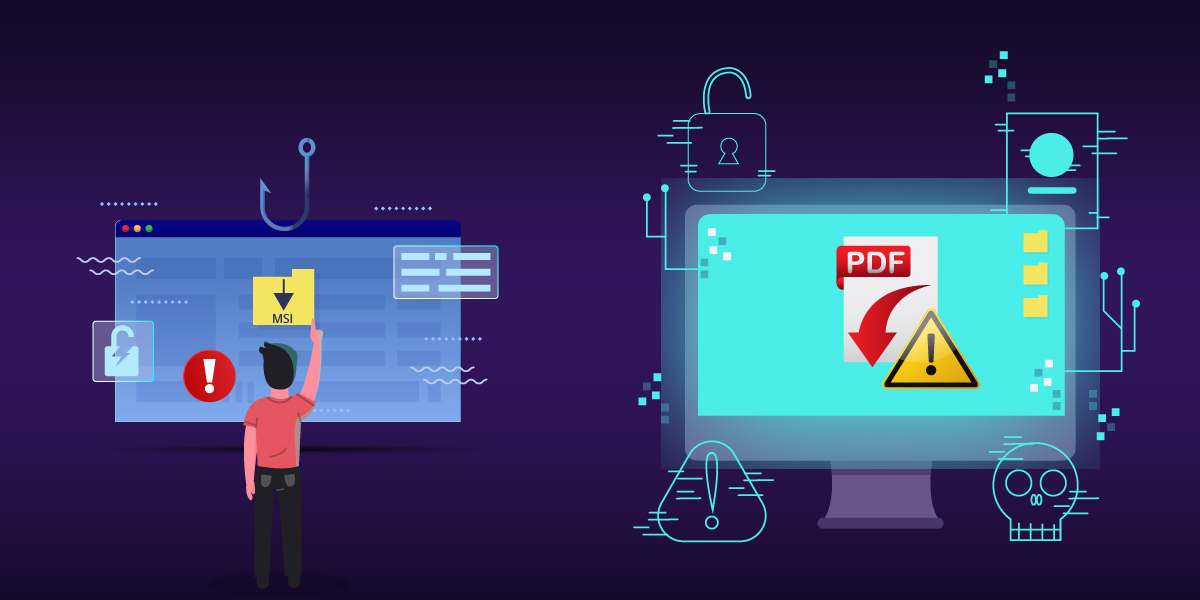In the interest of educating the general public about secure computing, we would like to share a blog series that intends to explain the various types of security threats over the Internet and a few precautionary steps to avoid falling prey to these security threats. This is the first part of the blog series that talks about the basic concepts of spam emails, their dangers and a few preventive measures to adopt to deal with them.
The message or email which we receive over the Internet but we never asked for is called spam. Mostly such messages are sent from unknown email addresses, using computer programs called spambots, to a bulk number of users for marketing a product or cheating the user, typically for financial gain. Spam uses social engineering tricks on victims to trick them into performing an action specified in the message.
In recent years the number of spam messages has considerably increased so much that one cannot differentiate them from legitimate messages in one’s inbox.
Spam includes unwanted messages using varied themes like:
- a person requesting for help
- being told that we have become a lucky winner of a prize or a victim of blackmail
- a newsletter that is never subscribed to
- fake job offers
- malware
- obscene material
- a huge bounty is promised out of the blue from an individual from a different country
- someone offering a business partnership
- a claim that we need to prove our identity by logging in or resetting the password of our bank account, email account, etc. This dangerous attack is called “phishing”
- causing a social issue with fake news
- offers on weight-loss products, medicines, drugs, etc.,
Spam consumes lots of storage space, internet bandwidth and other resources on a user’s computer or device. It can defame a brand and the products advertised are mostly illegal or banned. Some spam messages may also try to steal the victim’s personal information as in the case of phishing attacks. Apart from exhausting one’s time, and spreading malware, the above-mentioned points provide several other reasons to declare spam to be dangerous. Filtering out spam from our inbox helps us to use email services at ease.
How do we deal with spam? When we suspect an email to be spam, we can:
- Mark it as spam through the feature available in most of the email service providers
- Create filters to move emails to a spam folder, thus preventing them from polluting one’s inbox. Filtering is also possible by adding specific email addresses to the ignore list, specific contents in the subject line of the email, etc.
- report such messages to various spam control authorities
- use anti-spam software which can block a spam email based on previously recorded spam activities, suspicious titles or content, spam score and various other factors. K7 products contain in-built anti-spam features and also block malware which harvest email addresses from the computer
Additionally, the following safety guidelines are recommended when dealing with spam:
- Do not open emails that you never expected or suspect to have come from an unknown user. Most certainly don’t respond to such emails
- Avoid using the “unsubscribe” option that sometimes comes in spam emails as this would intimate to the spammers that your email address is a valid one
- Do not forward chain emails and suspected spam emails
- Do not publish your email addresses in public forums and comments sections. Use of temporary email addresses can help to some extent in these cases
We need to realise that changing our email address is not a long-term solution to the spam problem, as email harvesters can obtain one’s email address through various ways. Unless and until, we habituate better Internet practices, we can never learn to safeguard ourselves from spam.
Images courtesy of:
Marketingland.com
Gfi.net
K7 Threat Control Lab
If you wish to subscribe to our blog, please add the URL provided below to your blog reader: https://labs.k7computing.com/feed/









